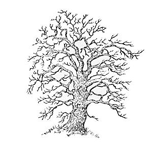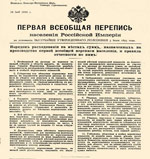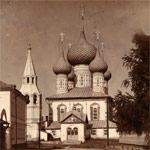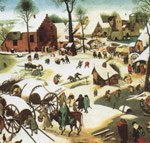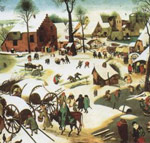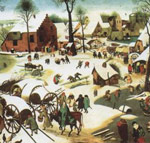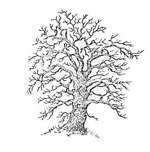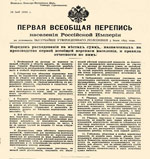What are household censuses and which censuses are the most informative
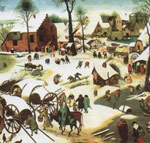 If you decide to seriously engage in a history of a kind, then you will definitely need a house census.
If you decide to seriously engage in a history of a kind, then you will definitely need a house census.In the XVII century. with the development of crafts and the trade in the unit of taxation, instead of the land plot, the yard became (ie, the farm), and the "censuses" turned from land to house. They took into account mainly tax (paid taxes) population. Household accounts existed in Russia for more than half a century. In total, 4 house censuses are known. The first was conducted by Alexei Mikhailovich Romanov (1646-1647), the last, the so-called Landart census, by Peter I in 1715-1717.
The government decree clearly defined goalsthe census 1646. "As peasants and mare and their households will rewrite," it was said in it, "according to those census books, the peasants and the beans, and their children, and the brothers and nephews, will be strong even without school years ... And which people, after that correspondence , they will take into account the runaway peasants and take them with them, but the landowners and landlords of those peasants, in court and in search and in those census books, give ... "
The census of 1646, unlike previousscribe descriptions was primarily a consideration of the population. The scribes recorded all taxable male persons, including children (the latter - indicating the age). The results of the census then served as a double service - they became the legal basis for an even greater enslavement of the peasants and a base for collecting taxes. The next census was carried out in 1676-1678.
To conduct a census in a given countyA scribe and several of his assistants, the scribes, were going there. The scribe was supplied with a manual - an instruction on how to conduct a census. In addition, he was given "spelling books" - a copy of the materials of the previous descriptions of the terrain to which the scribe was heading. As a "spicery" during the census 1676-1678, for example, census books were used. 1646. The local governor was obliged to assist the census-takers arriving in his county, to appoint assistants from among the local population and to provide everything necessary, starting with food. In the 20s of the XVII century, the census commission was supposed, for example, to issue "on a carcass lamb, on a kuren, onions, garlic, eggs and butter on a fast day, and in lean ... where any fish is radiant." The direct work of the scribes began with the fact that when they arrived in the camps and volosts, in monastic patrimonies and estates, they were to "in those patrimonies and estates ... dedicate the decree (of the census) ... so that nobles and boyar children and their clerks and elders and tselovalniki brought fairy tales to them ... ". "Tales" in this case called reports on the number of peasants in the feudal fiefdom or people of the towns in the tax court.
The hard population, of course, triedto reduce the amount of taxes with which it was taxed on the basis of the results of the census. To deceive the scribes, there were various ways, and they were well known, enumerated in punishments to scribes, but this did little to help. The easiest way to allow "residential yards to write empty" was that people in the census during the census simply left for their relatives or left the city for a while, leaving the yard empty. Often peasants "from many yards to one translated", enclosed two courtyards with one hedge, and sometimes just hid yards from copyists.
Census of 1710, made under Peter, wore features of a house census, but an attempt was made to record both sexes. Happened. that from the census of 1678 to the census of 1710 the number of taxation farms fell by 19.5%. Peter rejected the results of the census of 1710, ordered to take taxes on books 1678 and to make a new census during 1716 and 1717.
Especially informative is the census of 1716. It is said who and when died, who is incapacitated, where the family members are at the time of the census. In addition, the data are compared with the censuses of 1678 and 1710 years.
The census itself predetermined abruptlythe negative attitude of the population and even the most severe penalties for concealment did not give the government the desired results. A lot of mistakes occurred because of ignorance and carelessness of copyists, and also because of bribes to copyists for missed yards. On the other hand, for a short time bribes empty yards were recorded as residential, there were cases of missing whole villages or the same village was copied twice.
